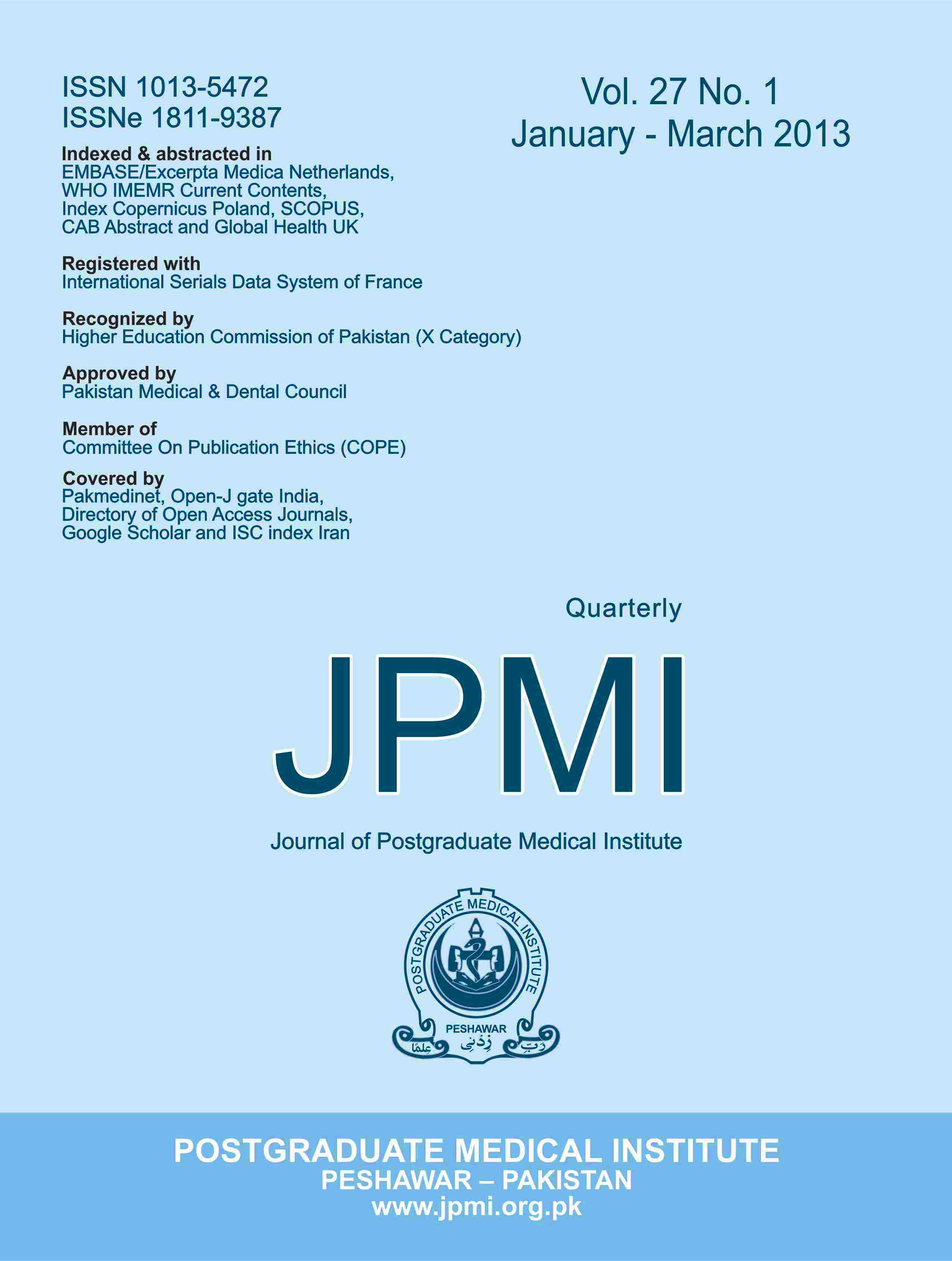ACTIVE VERSUS CONSERVATIVE MANAGEMENT OF PRELABOUR RUPTURE OF MEMBRANES AT TERM
Main Article Content
Abstract
Objective: To compare maternal and foetal outcome of active versus conservative management ofpremature rupture of membranes after 37 completed weeks of pregnancy.
Methodology: This quasi-experimental study was carried out at Gynae unit, Lady Reading Hospital,Peshawar from September 2004 to September 2005 and included 100 patients out of which 50 weremanaged conservatively and 50 actively. After confirming the leakage of amniotic fluid, patients wererandomized by lottery method to conservative or induced group. The patients in the group that wasmanaged conservatively were shifted to obstetrical ward to await the onset of regular uterine activity for atleast 48hrs. After Bishops scoring, patients were induced with vaginal prostaglandin E2 tablet. Bothgroups received intravenous antibiotics.
Results: Total number of patients with PROM at term was 3.84%. Total cost of stay in hospital andmanagement was greater in induced group (P. value <0.05%). Latent time was short in induced groupwhereas hospital stay was prolonged in induced group. About 80% of patients in conservative groupdelivered by NVD as compared to 60% in induced group. Among complications mild fever and PPH weresignificantly (P. value <0.05) more common in conservative group. There was neither neonatal death norstillbirth in both groups. No statistically significant difference (P. value >0.05) was observed in respect ofperinatal outcome and infectious morbidity in babies.
Conclusion: Conservative management of PROM at term should be viewed more positively for at least48hrs under appropriate antibiotic cover and with active management of 3rd stage of Labour.
Article Details
Work published in JPMI is licensed under a
Creative Commons Attribution-NonCommercial 2.0 Generic License.
Authors are permitted and encouraged to post their work online (e.g., in institutional repositories or on their website) prior to and during the submission process, as it can lead to productive exchanges, as well as earlier and greater citation of published work.


